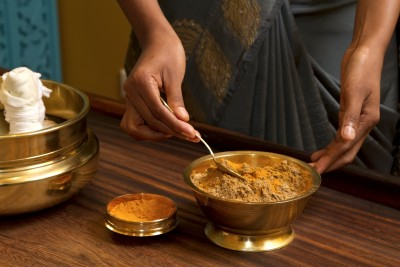The term Ayurveda is a combination of the Sanskrit terms “ayus”, meaning life and “veda”, meaning science or knowledge. It is a 5,000 year-old ancient Indian healthcare method that is still practiced today. More than 80 percent of the population in India uses Ayurveda, either alone or in tandem with traditional medicine.
Ayurvedic medicine looks to treat the cause of disease, not just to treat symptoms. Taking responsibility for one’s own health is a key component, which includes a personal focus on diet, exercise, spiritual well-being and being in tune with your body.
The foundation of Ayurveda is based on the connection between mind, body and spirit; the whole person. The belief is that individuals are born with predetermined psychological and physical traits. Treatments are based on those parameters, which remain unchanged throughout a person’s life. This is called a person’s “prakriti”. There are two types of prakriti, physical (sareerika) and mental (mansika).
According to Ayurvedic medicine, three life forces, or doshas, govern the physical (sareerika prakriti) side of an individual; Vata, Pitta, and Kapha doshas. Everyone has each of these doshas, but one is often more pronounced. Each dosha has its own characteristics, is made up of two of the five elements (space, air, water, earth, fire) and controls a specific body function. A balance among these three life forces is essential for proper health. Any imbalance in them causes a state of unhealthiness or disease.
Vata Dosha
Elements: Space and air.
Bodily Function: Regulates circulation, heart rate, breathing, elimination and the mind.
Vatas have a thin frame, move and think fast and do not like cold, dry weather. They are worriers and do not sleep well and are prone to heart disease, rheumatoid arthritis, or skin problems. When unbalanced they may have fear or anxiety. In balance they are extremely creative.
Pitta Dosha
Elements: Fire and water.
Bodily Functions: Regulates hormones, metabolism and the digestive system.
Pittas have a medium build, large appetites, may be red-haired and freckled, do not like hot weather and prefer cold drinks and foods. They are known to be perfectionists. Imbalances can bring about anger and being critical. They are prone to hypertension and digestive problems. In balance they are strong, risk takers and courageous.
Kapha Dosha
Elements: Water and Earth.
Bodily Functions: Regulates growth and the immune system. It keeps body tissues healthy, heals wounds, repairs cells and balances vata and pitta.
Kaphas have a heavy and solid build, are methodical and strong. They have thick hair, smooth skin and sleep soundly. They are prone to greediness, cancer, diabetes, respiratory problems and obesity. In balance they have positive and strong energy and a calm mind.
The mental (mansika prakriti) side of an individual is based on three states of mind, or gunas; Sattva, Rajas and Tamas. The prominent guna affects a person’s view of the world.
Sattva Guna
In Sanskrit sattva means purity, balance or order. Someone who has a more sattva mental side is calm, kind, observant, clear and peaceful.
Rajas Guna
Someone who has a more rajas mental side is bent on acquiring material possessions, as well as people. They are active, full of energy, and willful.
Tamas Guna
Someone who has a more tamas mental side indulges in excess, is negative, lazy and can often be delusional or ignorant. They may behave self-destructively.
Practitioners of Ayurvedic medicine make diagnoses by examining the face, tongue, lips, eyes and nails. All recommended treatments serve to balance the doshas. Some treatments include herbal medicines, specific dietary changes, yoga, meditation, massage and breathing exercises.
For more information on other types of healing modalities, visit the Healing Room.

